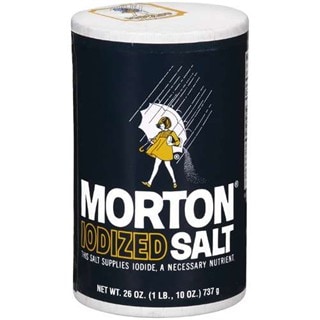Man, nothing can take a good food choice to down faster than the sodium count. I have rejoiced over foods that are low-carb, low-fat, high protein and…VERY high sodium. Sigh.
For those not in the know, sodium is a mineral that, in the proper quantities, can be beneficial to our health. The most common source of sodium is table salt but there are other types, such as MSG (monosodium glutamate).
The recommended daily allowance of sodium is about 2,400 mg. Keep in mind that is based on a 2,000 calorie diet. Your threshold would be lower because of the reduced amount of calories. How much is that for you? I dunno. Go ask your nutritionist!
Seriously, though. You and your nutritionist should decide how much sodium YOU should get based on YOUR health factors. But here’s a few helpful pieces of information:
- Sodium is used both to flavor foods and as a preservative.
- Frozen foods, like Lean Cuisine dinners, and lunch meat both tend to be high in sodium
- According to the U.S. government, something is low sodium if it has 140 mg or less of sodium per 100g of product.
- No added salt is not the same as low-sodium. It just means that they didn’t add any sodium to it. But there may be sodium already in the food itself.
Some advice on controlling sodium:
- Eat fresh food as often as you are able and eat in season. This reduces the amount of sodium from packaged and canned foods.
- Rinse canned vegetables and beans before using them. Don’t use the canning liquids.
- Look for lunch meats and frozen food labeled low-sodium or reduced sodium.
As with all parts of the nutrition label, the sodium gives you not only the count (number of milligrams per serving) but also the percentage of the daily value (the portion of the total amount of sodium you should get per day).
I know I sound like a broken record but it bears repeating…those numbers assume a 2,000 calorie a day diet. Your sodium allowance may be (probably will be) lower. Especially if you have special medical considerations, you should work with your nutritionist to come up with your own daily allowance. Then use THAT number along with the actual sodium content (in milligrams) to judge the sodium content of a food.
What the heck does that mean? Well, if my sodium intake limit is 2000mg for instance, something that is 500mg of sodium is 25% of my daily intake whereas it’s only 20% of the total intake for a 2,000 calorie diet. Maybe I’d make a different decision based on that information, maybe I wouldn’t. But it’s good stuff to know.
Tomorrow, we dig into the stuff you REALLY want to know about. CARBS! Do you love them? Hate them? FEAR them?
Check back tomorrow to learn what the label says and judge for yourself how carbs fit into your life.
 Bariatric Foodie Play with your food
Bariatric Foodie Play with your food




Great post! Looking forward to your carb post! I'm 7 mths out and carbs and I have a love hate relationship!